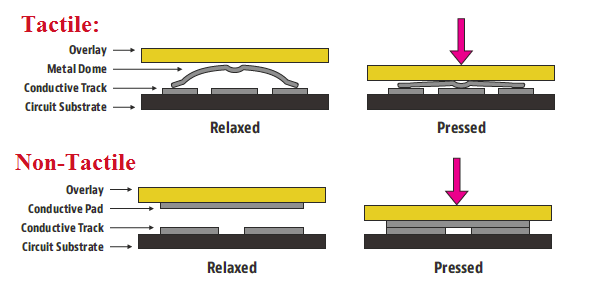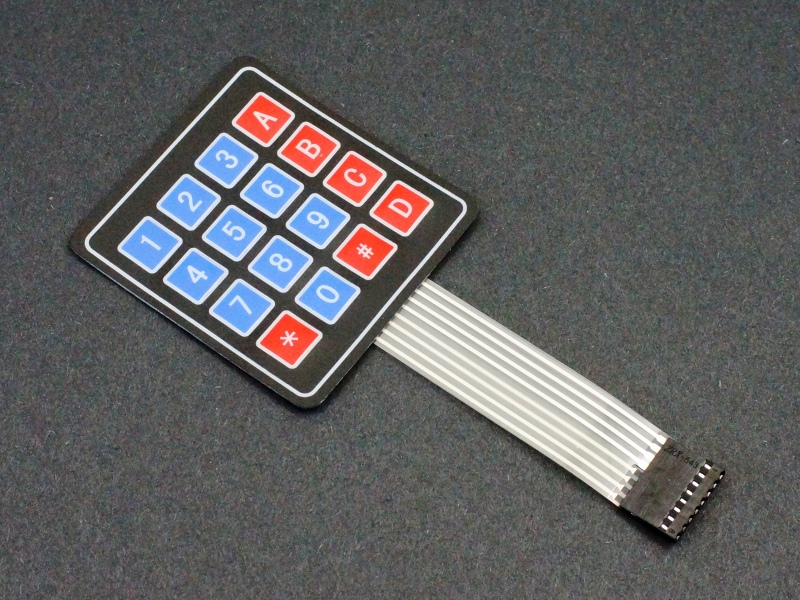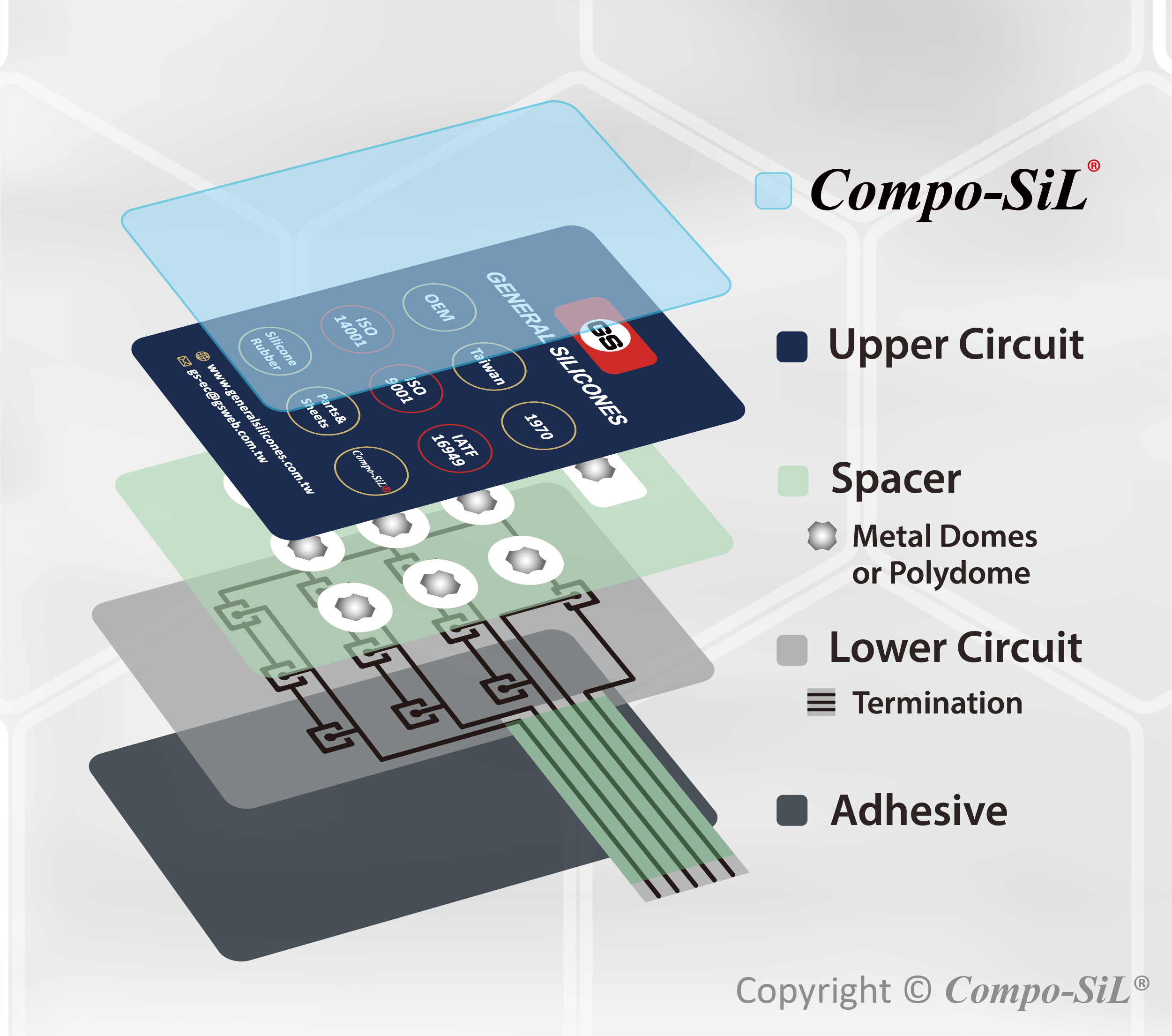Top Applications for Membrane Switches in Consumer Electronics
Top Applications for Membrane Switches in Consumer Electronics
Blog Article
Understanding the Relevance of Membrane Switches in User Interfaces
Membrane buttons are important components in the style of reliable customer interfaces, promoting not only functionality however additionally improving aesthetic allure and customer interaction. Their unique features, such as resistance to adjustable designs and ecological variables, make them appropriate for a diverse array of applications across several sectors. As we explore the future patterns and various advantages associated with Membrane modern technology, it ends up being clear that these buttons are much more than simply parts; they stand for a merging of development and usefulness. The ramifications of this modern technology on user experience are worth analyzing further.
What Are Membrane Buttons?

The spacer layer, which consists of adhesive properties, enables the splitting up of the circuit layer from the overlay, ensuring that the switch stays in a non-activated state until pushed. When stress is used to the overlay, it presses the spacer layer, linking the space and finishing the circuit in the underlying layer. This layout not just decreases the physical room required for typical mechanical switches but also enhances the sturdiness of the tool, as Membrane buttons are usually immune to dirt, wetness, and other ecological variables.
Frequently located in applications ranging from customer electronics to medical devices, Membrane buttons are integral to modern-day technology, supplying a effective and easy to use user interface that straightens with contemporary style demands.
Advantages of Membrane Buttons
While many button modern technologies exist, Membrane Switches deal distinctive advantages that make them particularly desirable in different applications. Among the primary advantages of Membrane switches is their small layout, which permits space-saving implementations in devices where property is limited. Their slim account not only improves aesthetic appeal but additionally assists in light-weight building.
One more significant advantage is their resistance to ecological aspects. Membrane switches are usually secured versus moisture, dust, and impurities, making them excellent for usage in demanding settings, such as medical devices and industrial tools. This resilience expands the life expectancy of the button, lowering upkeep costs and improving reliability.
Moreover, Membrane switches can be tailored to fulfill certain layout requirements, incorporating distinct graphics and colors that enhance individual interaction. Their tactile feedback options can also be customized to give a satisfying customer experience. In addition, Membrane buttons are affordable, particularly in high-volume applications, as they can be created efficiently.
Applications in Various Industries

In the consumer electronics sector, Membrane buttons prevail in gadgets such as microwaves, cleaning devices, and remotes. Their tactile comments and aesthetic options enhance individual experience while supplying a streamlined, contemporary appearance. Furthermore, auto producers make use of Membrane switches in control panel controls and infomercial systems, where space is restricted, and customer involvement is crucial.
Moreover, the industrial sector leverages Membrane buttons in control panels for machinery and equipment, permitting instinctive operation in frequently severe atmospheres. Their resistance to chemicals and dampness guarantees long life and integrity in these applications. Generally, the adaptability of Membrane Switches adds dramatically to their widespread usage, making them vital in numerous technical domain names.
Layout Factors To Consider for Membrane Buttons

When developing Membrane switches, numerous vital factors to consider have to be taken into account to guarantee optimum functionality and individual experience. To start with, the selection of materials is crucial; choosing sturdy, top quality substratums can improve the switch's long life and resistance to environmental aspects such as dampness and temperature level changes.
Second of all, the layout of the visuals overlay need to focus on quality and ease of usage. Icons and text need to be readable, and the format should facilitate user-friendly interaction (membrane switches). Additionally, responsive comments is essential; integrating a tactile dome or other systems can enhance the customer experience by giving physical confirmation of activation
Another crucial factor is the button's electric performance. Developers must make certain that the conductive traces are properly made to lessen resistance and stay clear of signal interference. This entails analyzing the required actuation force and guaranteeing compatibility with the electronic components they will user interface with.

Future Fads in Membrane Innovation
As innovation remains to breakthrough, Membrane buttons are poised to progress dramatically, driven by advancements in materials and manufacturing techniques. One emerging fad is the incorporation of advanced materials, such as conductive inks and adaptable substrates, which boost longevity and lower the total weight of Membrane switches. These products not just enhance the tactile action however additionally permit the design of buttons that can endure harsher ecological problems.
In addition, the integration of touch-sensitive technologies is changing traditional Membrane Switches into more interactive interface. Capacitive touch sensing units embedded within Membrane button panels can provide an extra user-friendly and responsive user experience, lining up with the expanding demand for sleek, modern-day layouts in consumer electronic devices.
Furthermore, advancements in printing methods, such as electronic and 3D printing, make it possible for quick prototyping and customization of Membrane switches. This adaptability allows suppliers to react quicker to market demands and consumer choices.
Last but not least, sustainability is ending up being a substantial focus, with makers exploring green materials and processes. you can try this out As these fads unravel, the future of Membrane technology guarantees boosted performance, aesthetic allure, and environmental obligation, solidifying their role in innovative user interfaces across different markets.
Final Thought
In verdict, Membrane Switches stand for a crucial element in the layout of individual interfaces, combining performance with visual flexibility. As innovations in modern technology proceed, the development of Membrane buttons is expected to additional improve user interfaces, driving technology and improving functionality in a significantly intricate technical landscape.
Membrane switches are important components in the layout of effective user interfaces, facilitating not just capability yet additionally enhancing aesthetic appeal and individual interaction.Membrane Switches offer as a crucial part in different customer interfaces, facilitating a smooth interaction between individuals and electronic tools.While numerous button innovations exist, Membrane Switches deal distinctive advantages that make them particularly preferable in numerous applications.Furthermore, Membrane switches can be personalized to satisfy details layout demands, integrating distinct graphics and colors that boost individual communication.In verdict, Membrane Switches stand for an important part in the design of individual interfaces, combining functionality with aesthetic versatility.
Report this page